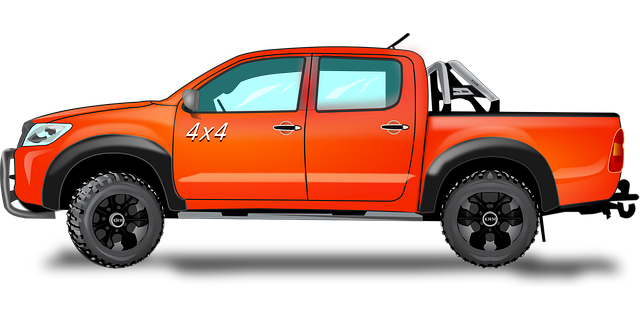Brake pads are critical for fleet safety in Brownsville, controlling wheel speed during trucking operations. Regular maintenance and replacement by managers is essential for optimal performance, control, and extended component lifespan. Tire rotation is a vital practice to ensure even tire wear, prolonging brake pad life and saving costs. In Brownsville's heavy truck traffic, proactive fleet maintenance, including timely pad replacements, enhances safety and braking system longevity. Choosing appropriate pads (semi-metallic, ceramic) tailored to trucking conditions optimizes efficiency during fleet Truck tire rotation in Brownsville. Regular inspections and records of brake pad mileage are cost-effective solutions for fleet owners to streamline maintenance, enhance reliability, and manage budgets effectively.
Brake pads are a critical component in ensuring the safety and performance of commercial trucks, especially within bustling urban environments like Brownsville. This article delves into the essential role of brake pads, exploring topics such as understanding their function, maintaining tire alignment through rotation, mitigating localized wear patterns common in certain areas, and choosing the right pad types for optimal fleet efficiency. We also discuss cost-effective service strategies to keep your trucks running smoothly, considering the unique challenges posed by frequent fleet operations.
- Understanding Brake Pads: Essential Components for Fleet Safety
- The Role of Tire Rotation in Prolonging Pad Lifespan
- Brownsville's Impact: Localized Wear and How to Mitigate It
- Types of Brake Pads: Choices for Commercial Trucks
- Regular Maintenance Checks: Key to Efficient Braking
- Cost-Effective Solutions for Frequent Fleet Service
Understanding Brake Pads: Essential Components for Fleet Safety

Brake pads are an integral part of any vehicle’s braking system, but their significance becomes even more critical for fleet operations and commercial trucking. In the world of fleet safety, understanding brake pad functionality is paramount as they play a pivotal role in preventing accidents and ensuring the smooth operation of trucks on the roads of Brownsville and beyond.
These pads are designed to make direct contact with the rotor, creating friction that slows down the rotation of the wheels. Regularly maintaining and replacing brake pads is crucial for fleet managers to guarantee optimal performance and safety during truck tire rotations. By keeping an eye on pad wear and tear, they can avoid sudden braking failures, improve control, and extend the life of other critical components, ultimately contributing to a more efficient and secure trucking experience.
The Role of Tire Rotation in Prolonging Pad Lifespan

Regular tire rotation is an often-overlooked yet essential practice for maintaining your vehicle’s braking system, especially in fleet trucks. In Brownsville and beyond, understanding the impact of tire rotation on brake pads is crucial for cost-effective and safe driving. By rotating tires, you ensure even wear across all four, prolonging not just tire life but also significantly extending the lifespan of your brake pads.
This simple maintenance routine helps maintain proper pad thickness, ensuring optimal braking performance. In fleet trucks, where stop-and-go traffic is common, regular rotation can be the difference between frequent pad replacements and a more extended service life. It’s a cost-saving measure that contributes to safer roads and reduced downtime for your vehicle.
Brownsville's Impact: Localized Wear and How to Mitigate It

Brownsville, with its bustling truck fleets and frequent vehicle traffic, presents unique challenges for brake pads. The constant stop-and-go nature of local driving conditions can lead to localized wear on pads, affecting their lifespan and performance. This phenomenon is particularly notable in areas with heavy truck traffic, like Brownsville, where the demand for consistent and reliable braking is paramount.
To mitigate this issue, regular fleet maintenance routines are crucial. Implementing a rigorous tire rotation schedule not only ensures even wear on tires but also indirectly benefits brake pads by reducing overall vehicle stress. Additionally, keeping an eye on pad thickness and performing timely replacements can significantly enhance safety and extend the life of your truck’s braking system, especially in demanding environments like Brownsville.
Types of Brake Pads: Choices for Commercial Trucks

When it comes to commercial trucks, choosing the right brake pads is essential for safe and efficient operations. Fleet managers have a variety of options available, each designed to cater to different driving conditions and vehicle types. Semi-metallic pads are a popular choice due to their cost-effectiveness and ability to provide consistent braking power over long distances, ideal for fleet Truck tire rotation in Brownsville. For more demanding applications, ceramic or low-metal content pads offer reduced noise levels and lower wear rates, minimizing maintenance requirements. Understanding these variations allows businesses operating fleets in diverse environments to select brake pads that enhance safety and reduce downtime.
Regular Maintenance Checks: Key to Efficient Braking

Regular maintenance checks are essential for ensuring optimal braking performance in any vehicle, especially in fleet trucks that endure frequent and prolonged use. In the case of brake pads, a crucial aspect of these checks is monitoring their wear and tear. Over time, brake pads experience gradual degradation due to friction against rotors, which can lead to reduced braking efficiency if left unaddressed.
For fleet truck operators in Brownsville, regular tire rotation schedules should be accompanied by routine brake inspections. This proactive approach allows for the timely replacement of worn-out pads, ensuring that trucks maintain consistent and powerful braking capabilities. Such maintenance practices not only enhance safety on the road but also contribute to cost savings by preventing sudden and unexpected brake failures.
Cost-Effective Solutions for Frequent Fleet Service

For fleet operators, regular maintenance is key to keeping vehicles on the road and reducing unexpected breakdowns. One often-overlooked aspect is brake pad management. Frequent service doesn’t have to be costly, especially when it comes to fleets. A strategic approach can significantly lower expenses without compromising safety. Regular inspections and timely replacement of brakes pads are essential, as well as implementing a rigorous tire rotation schedule, particularly in regions with varying climates like Brownsville. This simple yet effective practice extends tire life, reduces wear and tear from uneven braking, and ultimately saves on costly tire replacements.
Additionally, keeping detailed records of brake pad mileage and condition can help fleet managers predict when replacements will be needed. By adopting these cost-effective solutions, fleet owners in Brownsville can streamline their maintenance routines, enhance vehicle reliability, and create a more efficient, budget-conscious operation.
In conclusion, maintaining optimal brake pad health is paramount for fleet truck safety and efficiency. By understanding these components’ crucial role, implementing regular maintenance checks, and adopting cost-effective strategies like tire rotation, fleet operators can significantly extend pad lifespan. Addressing localized wear issues, such as those prevalent in Brownsville, through proactive measures ensures consistent braking performance and minimizes downtime. Choosing the right brake pad type tailored to commercial trucks further enhances safety and reduces operational costs. With these practices, fleet managers can navigate the road ahead with confidence, knowing their vehicles are equipped for reliable and safe stopping power.
